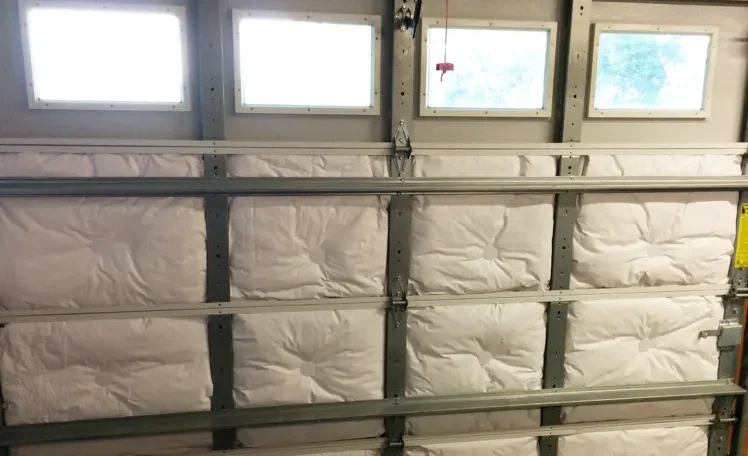Hey there! Have you noticed how home upgrades are getting smarter every year? Well, in 2025, garage door insulation has taken center stage. It’s become a must-have feature for homeowners who want to save money, boost comfort, and add value to their property all year round. Trust me, this simple upgrade can make a huge difference in your home’s efficiency. What Makes Affordable Garage Doors Worth the Investment When shopping for budget-friendly entry systems, you need to focus on value, not just price. A good quality door that costs a bit more upfront might save you thousands in the long run. The best Affordable Garage Doors offer solid warranties, energy efficiency, and reliable operation. Look for manufacturers who stand behind their products with at least a 5-year warranty. Insulated models might cost slightly more initially but can reduce your energy bills significantly. Plus, they’re typically quieter and more durable than non-insulated alternatives. Remember, the goal is finding that sweet spot between cost and performance. The Evolution of Garage Door Insulation in Modern Homes Remember when we didn’t care about temperature control in our storage spaces? Those days are gone! Modern homes now feature advanced garage door insulation that wasn’t common just five years ago. Climate change has pushed homeowners to find new ways to keep energy costs down. The materials have improved too. What started as basic foam panels has evolved into high-tech solutions that work better than ever. Manufacturers now create products specifically designed for different climates, whether you live in Arizona or Alaska. These advanced materials fit perfectly with smart home systems, allowing you to monitor and control the temperature from your phone. Top Types of Insulation to Add to Your Garage Door in 2025 If you’re looking to upgrade your home this year, several excellent options exist for adding garage door insulation: Reflective barriers with aluminum backing Foam panel kits (both rigid and flexible) Spray-applied materials for custom coverage Fiberglass batting systems with moisture barriers Eco-friendly options made from recycled materials Each type offers different benefits depending on your climate and budget. The good news? Most garage door insulation options are more affordable than ever, with prices dropping as demand increases. You’ll definitely find something that fits your needs and wallet. Comparing Garage Door Insulation Kits for DIY Installation Want to tackle this project yourself? No problem! DIY kits have come a long way in 2025. Most home improvement stores now carry complete garage door insulation systems that include everything you need for installation. These kits typically contain pre-cut panels, adhesive, tape, and clear instructions. The best part? You can usually complete the entire project in a single afternoon. Just make sure to measure correctly before purchasing. Most kits cover standard sizes, but you might need to trim pieces for custom dimensions. This small time investment can lead to years of energy savings. Garage Door Opener Repair vs. Replacement: Making the Smart Choice When your opener acts up, you face a tough decision – fix it or replace it? For units less than 8 years old, repairs often make financial sense. Common issues like remote problems or sensor alignment typically cost under $150 to fix. However, if your opener is older or needs major repairs costing more than half the price of a new one, replacement becomes the smarter option. Today’s new models offer enhanced security features, smartphone compatibility, and quieter operation. Plus, they’re more energy-efficient, potentially lowering your electricity bills over time. Energy Efficiency and Temperature Control Benefits of Insulated Garages Let’s talk savings! Adding garage door insulation can cut your energy bills by up to 20% in some homes. This happens because your heating and cooling systems don’t have to work as hard when that large space isn’t leaking air. But it’s not just about money. A properly insulated area keeps temperatures more stable, which protects your vehicles and anything else you store there. Think about your tools, holiday decorations, and sports equipment – all better protected from extreme heat and cold. Garage door insulation creates a buffer zone that benefits your entire home. Understanding R-Value and Foam Insulation Options When shopping for garage door insulation, you’ll see something called “R-value” mentioned a lot. Simply put, this number tells you how effective the material is at blocking heat transfer. Higher numbers mean better performance. For most homes in average climates, an R-value between 8 and 12 works well. If you live somewhere with extreme temperatures, consider going higher. The material thickness directly impacts this value, so thicker panels typically perform better but cost more. It’s worth investing in quality products for long-term performance. Conclusion: Making the Right Choice When Buying a New Insulated Door Ready to upgrade? Consider both your climate and budget when selecting the right solution for your home. Installation can be a fun weekend project or something you hire a pro to handle – either way, the benefits start immediately. Remember that this home improvement offers one of the best returns on investment among modern upgrades. Not only will you enjoy lower utility bills and a more comfortable space, but you’ll also boost your property value if you decide to sell in the future. Garage door insulation is definitely worth adding to your home improvement list this year Our Experts Are Here To Help Get a Free Quote FAQ How difficult is it to insulate garage doors myself, and how long will it take? Most DIY kits to insulate garage doors are incredibly easy to install. You’ll need basic tools, measuring tape, and about 2-4 hours depending on your door size. The panels typically attach with adhesive strips or clips. Many homeowners complete this project in a single afternoon with great results. What’s the difference between reflective insulation and polystyrene panels? Reflective insulation uses aluminum foil to bounce radiant heat away from your space. It’s thinner but effective in hot climates. Polystyrene panels are thicker foam boards that block heat transfer in both directions. They have higher R-values and work better..


